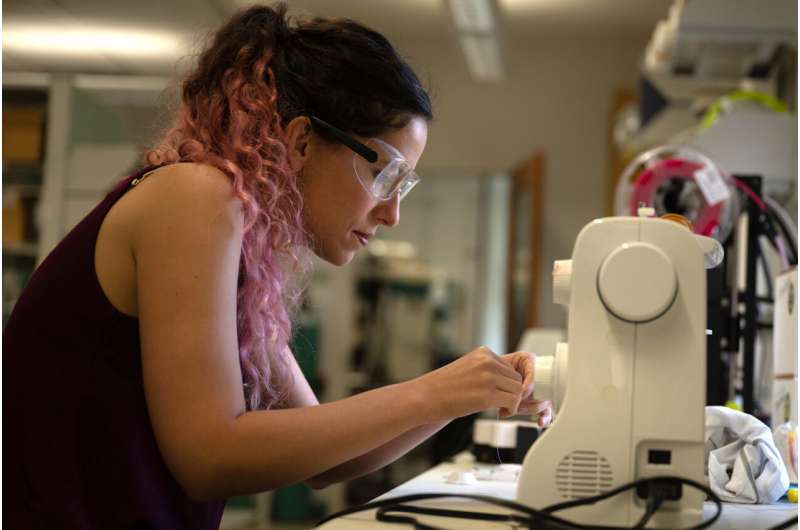Lately, the concept of smart fabrics has been emerging worldwide. Various examples of smart clothes have been observed, providing technology to monitor different physiological features of the wearer; however, recently, we see how fine-quality, conductive fibres might make for an extra seamless experience.
A team of researchers from Rice University has developed a “smart” shirt that uses interwoven carbon nanotube fibres, providing stable electrical contact with the skin. Such contact with human skin helps to gather data on heart activity.
Back in 2013, the researchers introduced carbon nanotube technology that was as solid as carbon fibre. With the potential to be extremely flexible, it conducted heat and electricity and a metal wire. The filaments are nearly 22 microns wide with billions of carbon nanotubes. The researchers identified their potential in cochlear implants, flexible antennas and repairing broken electrical circuits in the heart.
Smart clothing has always been potent enough for different useful purposes. To make this work, researchers had to go through an awful lot. With outstanding quality, the original fibres couldn’t be dealt using a standard sewing machine. Therefore, a rope-making device was used to pack the filaments together. The bundles were woven into a fibre roughly the same size as a regular thread. The fibres could then be machine-sewn into fabric in a zig-zag pattern to not crack when pulled. With their metal-like conductivity, the fibres serve as integrated electrodes and signal transmission wires, opening new doors for various significant uses.
Scientists carried various experiments, for instance, comparing the ability of their smart shirt to record live heart rate data to a regular chest-strap monitor. The results concluded that the shirt did an efficient job. In addition, they also utilized threads as electrodes for electrocardiograms and discovered that the shirt has the same performance as the conventional electrode monitors.
“The shirt has to be snug against the chest,” says Rice graduate student Lauren Taylor, lead author of the study. “In future studies, we will focus on using denser patches of carbon nanotube threads, so there’s more surface area to contact the skin.”
The smart fabric has a wide range of applications. For example, it can easily be cleaned in a washing machine and connected to Bluetooth transmitters to transmit data to smartphones. Also, it can be attached to a pocket-size Holter monitor that tracks heart activity. In addition, some potential uses also include combining antennas or LED lights to monitor the body’s basic functions, such as breathing rate, blood pressure, respiration rate etc.
“We see that, after two decades of development in labs worldwide, this material works in more and more applications,” says study author Matteo Pasquali. “Because of the combination of conductivity, good contact with the skin, biocompatibility and softness, carbon nanotube threads are a natural component for wearables.”
The study was published in the journal Nano Letters. To know further about the research, see the video below:

